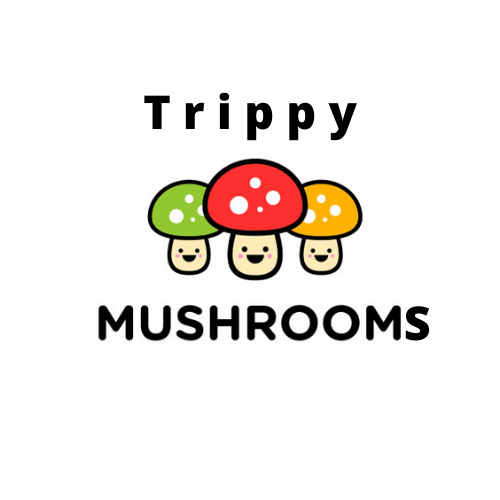Blogs
Psilocybin: “Limitless” Magic Mushroom
By: Admin T
Psilocybin: What It Is
Remember the movie Limitless? It’s the (trite) story of a middle-aged man struggling with writer’s block who experiments with an untested mystery drug to unleash his mind’s full potential. Sure, that movie is a hack work of fiction, but it’s the closest modern-day analogy when discussing the psychoactive compound inherent in magic mushrooms: psilocybin.
As we return to reality, psilocybin is found in over a hundred species of magic mushrooms. It is an essential topic of discussion in scientific circles, mainly because of the medicinal benefits (and while those Woodstock-esque psychedelic trips can be a wild ride, they’re not the ones we’re talking about). The side effects of this prodrug vary. For instance, it’s theorized that the psilocybin in magic mushrooms diminishes the appetite of predatory insects and sustains them for extended lengths of time without “proper” physical sustenance – for us humans, on the other hand, the White Rabbit cometh.
Psilocybin has the same psychedelic properties as street-drugs like LSD. It’s because our gut converts the substance in the mushrooms into psilocin, binding to serotonin receptors and activating what experts call neuronal avalanching. Think of it like a Rube Goldberg machine; the compound starts by affecting your visual cortex and tends to modify your overall perception of the environment into a majestic, blurry hodgepodge. The decreased network motion in your default mode network leads to a total loss of subjective self-identity. In layman’s terms, thinking you’re Superman with the ability to leap tall buildings wouldn’t be out of the question.
Psilocybin: How it Operates
Psilocybin causes a deep sense of enlightenment. The dynamic brain interacts with other parts of your mind that generally operate independently, but are now accepting friend requests [see Figure 1]. To quote Dr. Peter Venkman from Ghostbusters, “…dogs and cats living together. Mass hysteria!”
The newly activated receptor causes this severe change in brain synchronization and leads to profound thoughts – more complex than the ones made while contemplating on your porcelain throne. Now, don’t think this means you no longer study for your exams (reminder: this isn’t Limitless). Instead, you can begin thinking laterally and finding solutions to problems that may previously have been considered unorthodox.
The sections of our brain each serve a different purpose, like an orchestra. An orchestra is divided into woodwinds, brass, strings, percussion, and possibly a host of other groups, but you get the picture. Psilocybin is the conductor. Granted, this band leader can be more of a wacky inflatable arm flailing tube man rather than the stoic stereotype of the composed conductor.
Psilocybin: The Side Effects
So, what can this component do other than make you feel like the fifth Beatle on the Yellow Submarine? Researchers find the amalgamation of these effects help fight against depression and addiction. They describe it as a sort of talk therapy as you become able to visualize problems from a different perspective and, for the first time, rationalize other possibilities without consequence. The result of psilocybin use can be an organic form of self-healing.
Several prescription drugs and antidepressants target the serotonergic system because raising activity in this area makes you feel socially active [see figure 2]. However, psychedelic drugs – like ecstasy, LSD, and magic mushrooms (psilocybin) – create surprising effects on that system. Conversely, decreased serotonergic activity can cause depression and irritability.
Psilocybin: Case Studies
Cancer patients with depression According to a study in the Journal of Psychopharmacology 2016, Vol. 30(12) 1165–1180, researchers gave cancer patients with depression a hefty dose of psilocybin, and the results were the following:
“At the 6.5-month follow-up, psilocybin was associated with enduring anxiolytic and antidepressant effects (approximately 60–80% of participants continued with clinically significant reductions in depression or anxiety), sustained benefits in existential distress and quality of life, as well as improved attitudes towards death. The psilocybin-induced mystical experience mediated the therapeutic effect of psilocybin on anxiety and depression.”
Smoking addicts stop smoking
In a pilot study for the treatment of tobacco addiction, here are the positive results by 12 of 15 volunteers (80%):
“Biomarkers assessing smoking status, and self-report measures of smoking behavior, demonstrated that 12 of 15 participants (80%) showed seven-day point prevalence abstinence at 6-month follow-up. The observed smoking cessation rate substantially exceeds rates commonly reported for other behavioral and/or pharmacological therapies (typically <35%).”
Psilocybin, despite its seemingly positive potential on the mind, is still regarded as a Schedule 1 drug, a classification for compounds with zero medical use and a likelihood for abuse.
Safety Test
Magic mushrooms, in the grand scheme of things, are one of the safest drugs available. An article in The Guardian: “Study finds mushrooms are the safest recreational drug”, 2017’s Global Drug Survey states that over 12,000 people that took magic mushrooms in 2016, 0.2% required emergency medical treatment – a figure five times less than other psychedelic drugs: MDMA, LSD, and cocaine.
Want to learn more about the medicinal benefits of magic mushrooms? Contact a Trippy Mushroom expert, and we’ll ensure you know all the facts. Click here.

Everyone loves what you guys are usually up too. This sort of clever work and coverage!
Keep up the good works guys I’ve incorporated you guys to my blogroll.
Hey much appreciated for the review on the blogs i work hard on! we are trying our best to release as much info on shrooms as we can get 🙂 – admin t